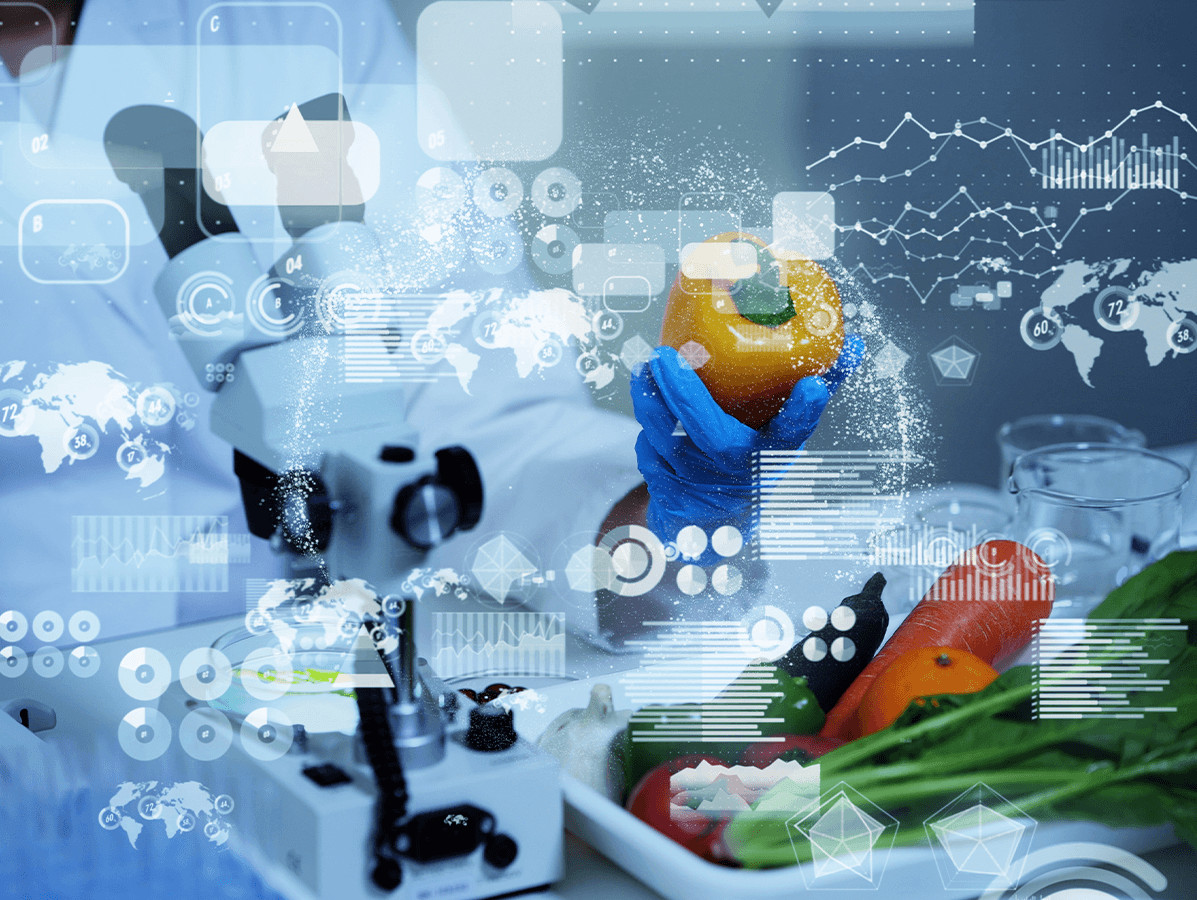
Preventing food waste, the protein and energy transition, a nitrogen crisis: there are major challenges ahead for the food sector. Digitalisation can help face these challenges and speed up innovations. But it is also a necessity, in order to maintain our position in the global market.
Digitisation and the sharing of AI data and models can bring many benefits to organisations, from reducing the environmental footprint, preventing waste and improving food safety to optimising processes and product quality, reducing costs and accelerating innovation.
Innovation and optimisation challenges are now often tackled on a case-by-case basis using costly and time-consuming trial-and-error methods. This can be done more efficiently: with predictive models that capture essential scientific knowledge about the process-product interaction. In order to streamline and accelerate the development, calibration and application of such models in the food industry, PSE (Process Systems Enterprise Ltd.) and NIZO have established the 'Centre of Excellence (CoE) for Food Product and Process Modelling'.
Digital continues, whether we want it to or not
Unilever has been using predictive modelling for some time in all kinds of developments, such as product formulations and shelf life stability. The Dressings project is a good example. Andre Pots, Product & Process Science R&D Director at Unilever says: "Predictive modelling has reduced recipe time from months to days, and it delivers accuracy and reliability. The successful launch of Hellmann's vegan mayo is a good example of this technology in action."
So, within the large food processing companies, initiatives are already underway to use digital techniques to improve business operations. But... digitalisation is expensive, especially for small companies. In addition, digitalisation of only the 'own part' of the value chain is not optimal. The Internet of Food (INOF) project, set up by the Sustainable Food Initiative (SFI) Foundation, therefore brought together knowledge and expertise from all corners in order to accelerate the digitisation of food processes and innovation. SFI is a collaboration between internationally operating companies - from SMEs to multinationals - and research institutes in the Netherlands.
Goal of the Internet of Food project
The aim of the INOF project is: 'to explore and apply the global scientific and technological developments in the field of Data Science, Artificial Intelligence (AI) and the Internet of Things (IoT) within the European food and agriculture industry in a smarter and faster way. This is in order to continue producing food in a more sustainable way; despite climate change, decreasing available agricultural land and diverse energy and water challenges'. Data-driven food value chain integration and chain reversal (consumer- and demand-driven product development) are essential starting points and opportunities in this regard.
Scientists from TU/e Eindhoven (Mathematics & Computer Science) and researchers from Wageningen University and Research (WUR) worked together in INOF with various companies and institutions, including Unilever, Symrise, NIZO and ISPT, based on the firm belief: "If you think you can do it alone, you are not thinking big enough" (said Manfred Aben, Unilever). They constantly exchanged their experiences. In addition, they set up scientific education - at the interface of Agri&Food and Data Science/ICT - to train the next generation of 'digital nutritionists'.
John Harinck, leader of the Industry 4.0 innovation programme at ISPT and participant in the INOF project, states on the need for cooperation and joint knowledge development: "All kinds of relevant data are now often stored in many different databases. Think of data on processing, product development and handling, consumer behaviour and preferences, results from scientific research, and so on. The same applies to models of and about product and process characteristics. These various systems cannot simply be linked together because they have been developed for different software platforms. This is partly why the data is often not findable, interoperable, accessible and/or reusable. It is precisely the ability and willingness to share data and models between different companies that is necessary for innovation and successful cooperation in the food ecosystem; it also prevents inefficient use of raw materials and utilities. Now everyone is constantly reinventing the wheel."
If you think you can do it alone, you're not thinking big enough'.
Within INOF, researchers from TU/e and WUR developed a demo that shows that it is possible to share complex data and models between companies and organisations, while still protecting IP and unique expertise. This is the 'Models As A Service' (MAAS) architecture. In addition, researchers from WUR have been working on the design, improvement and validation of 'next generation' sensors, such as NIR and optical measurement methods. These are necessary to provide the relevant data for a more sustainable and efficient production process.
The INOF project has been completed by the end of 2021. Moving forward? "With this project, we have taken the first concrete step on the long road ahead," says John Harinck. "Digital will continue, whether we want it to or not. Only through cooperation based on common goals can we develop the digital techniques of the future in the context of the food industry. These are badly needed: to face the major issues ahead of us, and to stay ahead of international competition. SFI would like to follow up on the INOF project, so that digitalisation within the food system can be further pursued. Interested in participating? Please contact [email protected]".
www.sfifood.nl/projects/the-internet-of-food
https://ispt.eu/projects/iof/
Photo: ©metamorworks/shutterstock.com
Source: Vakblad Voedingsindustrie 2022